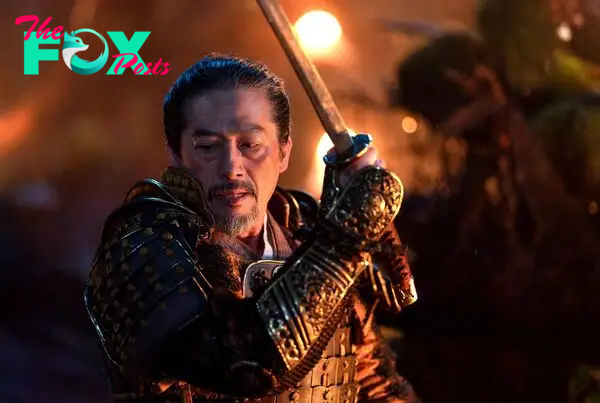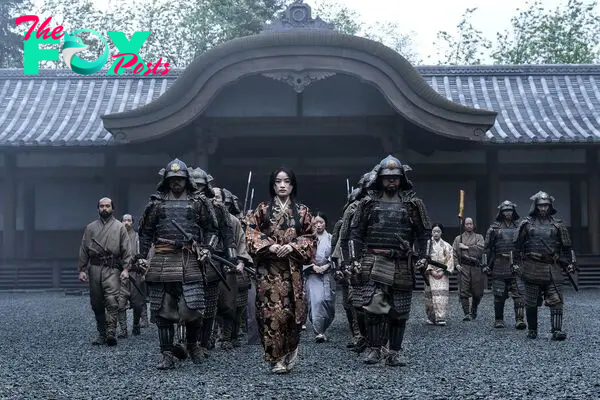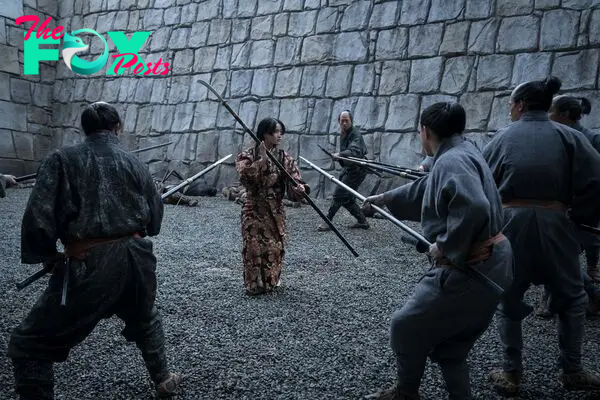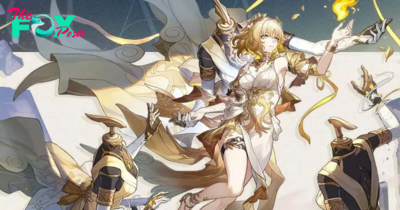Game
ShŇćgun‚Äôs stunt lead on the present‚Äôs ‚Äėno bullshit‚Äô method to motion
FX‚Äôs ShŇćgun is the finest present of the 12 months by some margin. The impeccably crafted interval piece builds out complicated and memorable characters and a formidable portrait of Japan on the flip of the seventeenth century, and each choice ‚ÄĒ right down to the smallest particulars ‚ÄĒ displays the clear creative intent and spirit of collaboration behind the collection.
The motion won’t be what some individuals anticipated, although ‚ÄĒ particularly not with the Sport of Thrones comparability the present has garnered. Somewhat than lengthy, drawn-out sword duels, ShŇćgun‚Äôs motion is as decisive as it’s violent, as fights often occur instantly. It brings a palpable sense of hazard to the present, and is a continuing reminder of the hazard of the weapons getting used. Stunt coordinator and second unit director Lauro David Chartrand-DelValle noticed ShŇćgun as a chance to keep away from the prolonged, unrealistic sword fights the place combatants are ‚Äúclacking over their head.‚ÄĚ
‚ÄúThey‚Äôre swinging up right here and anyone‚Äôs blocking up,‚ÄĚ he says, gesturing above his head. ‚ÄúWhy are you blocking it? That sword is simply going over your head, so simply, you realize, take his guts out.‚ÄĚ

Picture: Katie Yu/FX
As a substitute, the objective was to maintain the motion grounded in actuality and aimed towards aiding within the constructing out of the epic story on the coronary heart of the present. That was a change of tempo for lots of the crew, who Chartrand-DelValle mentioned have been coming from exhibits with ‚Äúlots of filler‚ÄĚ and 40-beat battle scenes that, whereas entertaining, lack the depth and finality of fights in ShŇćgun. ‚ÄúI needed to emphasize on a regular basis: Go for the goal. In case you‚Äôre slicing, you‚Äôre slicing for the neck, take his head off, you realize ‚ÄĒ particularly with armor, you‚Äôre making an attempt to get below the armpit, you‚Äôre making an attempt to get the again of the leg. It‚Äôs acquired to be actual, it‚Äôs acquired to be the goal, and should you‚Äôre not doing that I name bullshit and we‚Äôre simply going to begin over once more.‚ÄĚ
Over twenty years in the past, Chartrand-DelValle labored with ShŇćgun star Hiroyuki Sanada on the Tom Cruise blockbuster The Final Samurai. The 2 hit it off, and when Sanada discovered ShŇćgun could be capturing in Vancouver ‚ÄĒ not removed from the place the Canadian Chartrand-DelValle relies ‚ÄĒ the actor instructed the producers they need to give his previous collaborator a name. That film cemented the method Chartrand-DelValle makes use of to at the present time as an express name and response earlier than filming a giant motion sequence.

Picture: Katie Yu/FX
‚ÄúThe producers and administrators laughed at us,‚ÄĚ he says. ‚ÄúWe‚Äôd begin a giant situation [and it would go] ‚ÄėOK, you guys prepared? Right here we go, rolling cameras, and what are we not going to have?‚Äô ‚ÄėNo bullshit!!!‚Äô everybody screams out, after which we get into the battle.‚ÄĚ
Another excuse the present‚Äôs motion feels so actual is the period of time and dedication the workforce was capable of spend on it. Earlier than capturing, there was a six-week boot camp to coach actors, extras, and ‚Äúeveryone in between.‚ÄĚ ‚ÄúYou simply don‚Äôt get this, particularly with TV exhibits,‚ÄĚ he says. ‚ÄúOn movies, lots of instances we‚Äôll get months of rehearsal. However on TV, it‚Äôs often not that means. And we solely had a [limited] capturing window. However we have been so prepped beforehand, once we acquired to set, it was clean as silk. It was all about simply capturing it with the digital camera as a result of we knew what we have been doing. Everyone was on board. No one was making an attempt to alter stuff. We weren‚Äôt making it up on the day.‚ÄĚ
The present used painted bamboo swords on set to simulate the katanas, with one scene ‚ÄĒ when Buntaro (Shinnosuke Abe) slices by way of shoji screens ‚ÄĒ utilizing an actual blade. That wasn‚Äôt the one place the present needed to give in on authenticity in favor of security. ShŇćgun was a ‚Äúmassively‚ÄĚ collaborative present, Chartrand-DelValle says, as anybody who has learn the showrunners‚Äô feedback about working with cultural consultants can inform. The numerous technical advisors and interpreters on set have been concerned in ‚Äúevery part [they] did,‚ÄĚ per Chartrand-DelValle, from the best way individuals fought to the best way they walked.
‚ÄúSay, with Mariko, with Anna [Sawai],‚ÄĚ he says. ‚ÄúShe needed to stroll very brief steps and couldn‚Äôt have vast stances. It‚Äôs simply not what they did again within the day. And we consistently went backwards and forwards. As a result of there have been some ambush sequences, and it‚Äôs very chaotic, and no person is aware of what‚Äôs happening. And also you‚Äôre simply combating on your life. And I typically mentioned, and Anna backed me up, ‚ÄėShe‚Äôs gonna take larger steps.‚Äô She‚Äôs making an attempt to avoid wasting anyone‚Äôs life or her life; it‚Äôs simply gonna occur. However they wouldn‚Äôt [have done] it. That might dishonor them, after which they‚Äôd should kill themselves.‚ÄĚ

Picture: Katie Yu/FX

Picture: Katie Yu/FX
They acquired what Chartrand-DelValle calls ‚Äúa really minute quantity of leeway‚ÄĚ on this when Mariko tries to battle her means out of the citadel. Finally, the fervour of the scene overrode the interval issues (‚ÄúIt made me cry on the day,‚ÄĚ he says), and stayed true to the ShŇćgun ethos of fast and decisive motion. Although there have been round 40 individuals concerned within the scene, all of it feels prefer it‚Äôs over instantly, as guards on either side are minimize down rapidly ‚ÄĒ by sword, by spear, or by bow. In ShŇćgun‚Äôs battles, no person actually wins. The stakes are too excessive and the weapons far too lethal for that.
One place ShŇćgun needed to stray from actuality was a lot nearer to the bottom: footwear.
‚ÄúNo one apparently wore sneakers again in these days,‚ÄĚ Chartrand-DelValle says. ‚ÄúWe needed to put sneakers on our stunt individuals and our actors. We‚Äôre in rocks and sticks and muddy areas, and it was wintertime. You couldn‚Äôt be barefoot.‚ÄĚ
The collaborative nature and presence of many specialists made the expertise ‚Äúenjoyable and academic‚ÄĚ for Chartrand-DelValle, whose background is in Japanese martial arts coaching after learning below legendary Grasp Fumio Demura (Pat Morita‚Äôs martial arts stunt double in a number of Karate Child motion pictures).
‚ÄúI knew lots of it, however to not the extent that we have been doing it on ShŇćgun,‚ÄĚ he says. ‚ÄúWith TV and films, you‚Äôve acquired to take a little bit little bit of inventive license right here and there. Who was round in 1600? None of us, proper? We‚Äôre all going by stuff we‚Äôre studying, stuff that was handed down by way of generations.‚ÄĚ

Picture: Katie Yu/FX
For Chartrand-DelValle, all of it goes again to Sanada. His fixed presence on the set ‚ÄĒ suggesting changes, sharing his data, and total being a mentor ‚ÄĒ helped set the ShŇćgun workforce up for fulfillment and set up a collaborative surroundings. ‚ÄúHe‚Äôs so giving with all his data and his talents,‚ÄĚ he says. ‚ÄúHe‚Äôs simply acquired such a relaxed demeanor. And he makes everyone really feel comfy. When he says one thing, he‚Äôs talking from data. I might work with him any day, each day of the week on any venture, you realize, as a result of he‚Äôs going to carry that to every part he does.‚ÄĚ
And better of all for Chartrand-DelValle, it’s his earlier collaboration with Sanada that gave him the chance to work on this particular present.
‚ÄúYou get one likelihood to do a samurai epic in your lifetime, however to get a second likelihood?‚ÄĚ Chartrand-DelValle says. ‚ÄúTwo of them? I used to be like, Yeah, carry it on.‚ÄĚ
ShŇćgun is streaming on Hulu.
Source_link
-

 Game8h ago
Game8h agoStar Wars Outlaws Patch Cuts Stealth Goals, Improves AI, and Extra in Large Title Replace 1.4.0
-

 Game14h ago
Game14h agoThe Finest Swap Visible Novels and Journey Video games in 2024 ‚Äď From Fata Morgana and VA-11 Corridor-A to Famicom Detective Membership and Gnosia ‚Äď TouchArcade
-

 Game19h ago
Game19h agoHoYoverse teases Honkai Star Rail 3.0 characters, and oh by the way in which, Remembrance is a brand new playable path
-

 Game1d ago
Game1d agoThe Highest-Priced Playing cards In Pokémon TCG’s Surging Sparks
-

 Game1d ago
Game1d agoElden Ring: Shadow of the Erdtree Garners Controversy Amidst GotY Nomination
-

 Game1d ago
Game1d agoEvery day Themed Crossword Hints November 20 2024
-

 Game1d ago
Game1d agoPS Portal Will Enable Cloud Streaming in New Beta Replace
-

 Game1d ago
Game1d agoFinest Weapons Tier Record in Hollowed Roblox ‚Äď Weapons Ranked With Explanations
















